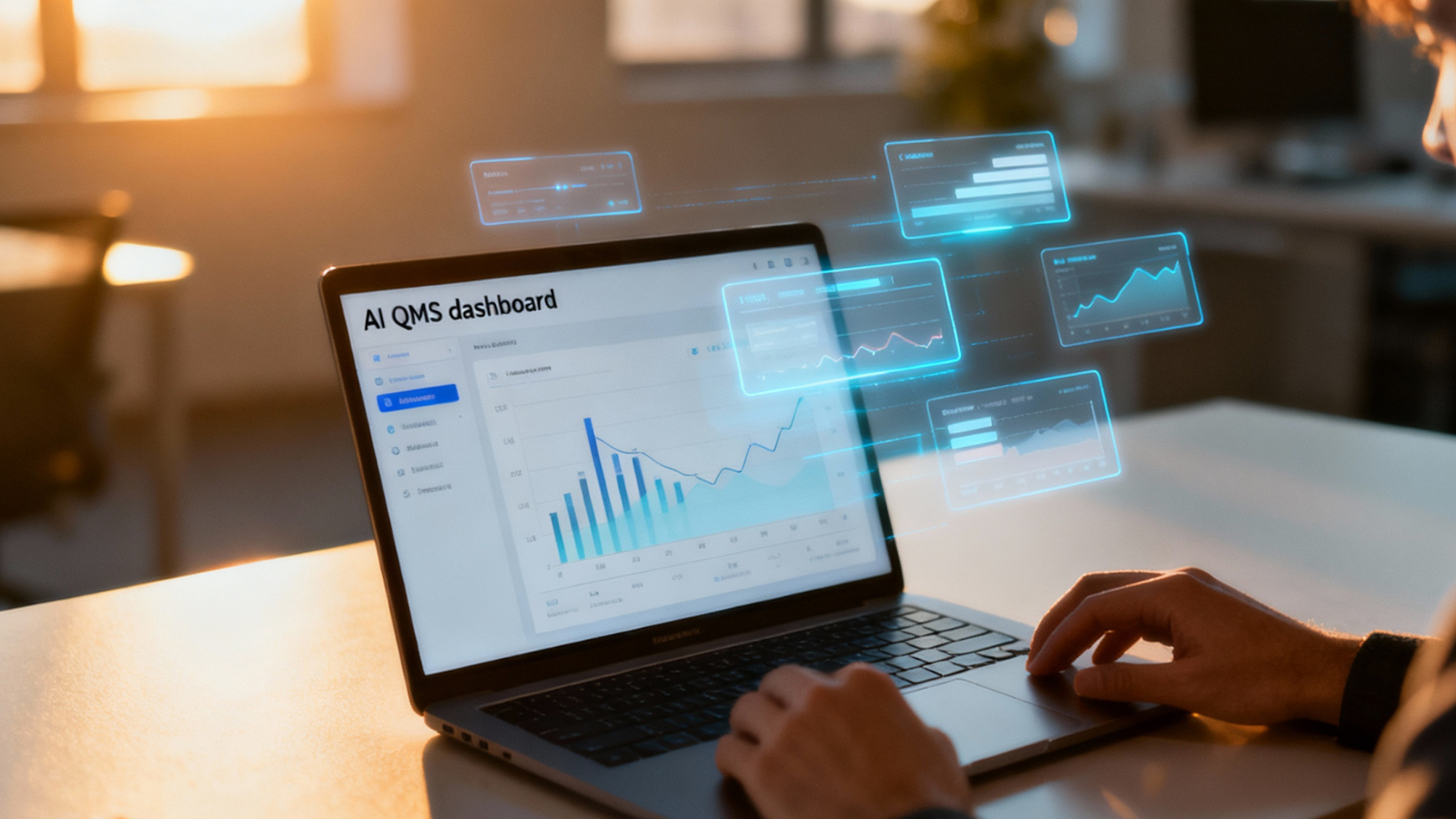Imagine this: It's 2026, and a sudden equipment failure in a remote field site cascades into a chain reaction, delays pile up, fuel trucks idle unnecessarily, compliance fines loom, and your carbon footprint spikes overnight. Sounds like a horror movie script!
Such disruptions in distributed asset maintenance could erode up to 20% of operational efficiency for global enterprises, underscoring the urgent need for proactive, tech-driven strategies.
The landscape of field service management (FSM) and computerized maintenance management systems (CMMS) is evolving faster than ever, fueled by relentless digital transformation pressures. From skyrocketing data volumes to regulatory mandates on sustainability and security, organizations face a perfect storm of complexity.
Here are 6 trends to transform 2026's trends into your ultimate competitive edge!
6 Trends for a Future-Proof 2026
Get ready to rock, because 2026 is rolling out a red-hot lineup of FSM and CMMS trends that’ll transform your operations into a lean, green, and brilliantly smart machine!
By jumping on these trends, think AI masterminds, eco-smart solutions, and bulletproof security, you’ll turn challenges into serious competitive advantages, leaving your rivals in the dust. From slashing costs to wowing customers with next-level efficiency, these game-changers will help you stand out in your industry like a neon sign in a storm.
Ready to seize the moment and make 2026 your year to dominate? Let’s dive in!
1) Agentic AI: Your Smartest New Team Member
Think of agentic AI as your “digital field engineer.” Agentic AI agents that can act somewhat autonomously while interacting with complex systems are rising fast. Recent studies show that companies that adopt generative AI, code-reuse, and advanced AI tools are seeing up to 50% faster development cycles in certain R&D or product engineering contexts.
In FSM / CMMS contexts, this means field teams guided by AI agents that suggest optimized routes, predict failure before it happens (predictive maintenance), and trigger preventative tasks automatically. Reduced travel time, fewer unplanned breakdowns, and optimized fuel usage are all within reach.
Latest insights reveal that generative AI is already revolutionizing maintenance, enabling predictive troubleshooting that boosts efficiency and slashes unplanned downtime by up to 50% in high-stakes environments like manufacturing and utilities.
2) IoT + Edge Computing: Assets That Talk Back
By 2026, the Internet of Things (IoT) will permeate every corner of asset management, forecasting that enterprise-connected devices will surpass 15 billion globally by 2029, building on the explosive growth already underway. But it's not just about volume; it's about velocity. Pair IoT with edge computing, and you unlock decentralized processing that slashes data latency by up to 40%, enabling split-second decisions at the source rather than being bogged down by cloud roundtrips.
Envision field assets that aren't passive; they self-report vibrations, temperature spikes, or wear in real time, triggering instant remote interventions before a full breakdown occurs.
In FSM, this means technicians arrive armed with augmented reality overlays from edge-processed data, boosting first-time fix rates to 85%. For CMMS, it's the backbone of true digitization: sensors feeding into mobile dashboards that visualize asset health across geographies.
3) Sustainable Tech: Green is the New Gold
Sustainability is not optional anymore. Deloitte's 2025 C-suite Sustainability Report positions ESG (Environmental, Social, and Governance) factors as a top-three priority, alongside AI and tech adoption, with 2025 marking a pivotal regulatory turning point for corporate accountability.
By 2026, "green code" software optimized to minimize energy use in data centers and devices will become the gold standard, potentially reducing operational carbon emissions in tech-heavy sectors.
To green your CMMS for 2026, start with these actionable steps:
-
Audit Tool Footprints: Map your current software's energy draw using tools like Deloitte's ESG benchmarks—aim to identify high-consumption modules first.
-
Integrate Carbon Metrics: Embed real-time trackers into workflows, linking FSM dispatches to emission dashboards for compliance-ready reporting.
-
Optimize Resource Allocation: Leverage AI for "green scheduling" that prioritizes low-emission routes and consolidates jobs, reducing fleet mileage by up to 15%.
-
Partner for Circular Economy: Shift to modular, recyclable assets via IoT-enabled reuse tracking, extending equipment life and minimizing e-waste.
4) Security First: Zero Trust Becomes Zero Excuse
Security threats grow as systems get more connected. Zero-Trust architectures are no longer “nice-to-have”—they will be standard by 2026 in many regulated industries. Organizations using Zero-Trust models are seeing measurable reductions in risk. Microsoft reported a ~50% lower chance of data breach for organizations using its Zero Trust security solutions, along with efficiency gains of 50%+ in security process management.
By 2026, zero-trust architectures will be standard, ensuring no user or device is automatically trusted. Forrester forecasts security budgets rising 5–10% to counter growing breaches, with zero-trust boosting protection by 35%. In FSM, this means blockchain-secured data sharing will replace fragmented systems, verifying every transaction in real time.
In the FSM/CMMS realm, secure data sharing (technician devices, asset data, remote diagnostics), hybrid environments, and field connectivity over possibly untrusted networks demand Zero-Trust: strong identity verification, minimal access rights, encrypted communication, continuous auditing.
Tips to Audit Current Security Gaps:
-
Map data flows from field device → CMMS → cloud / edge → support / analytics.
-
Evaluate who has access to what: principle of least privilege.
-
Inspect device endpoints for patching, firmware updates.
-
Ensure compliance with relevant standards (data protection, regulatory, industry-specific security laws).
5) QMS Goes Digital: Quality 4.0 Arrives
Quality Management is going digital fast. Importantly, ISO 9001 is being revised: the next version, ISO 9001:2026, is expected around September 2026, following delays and extra draft review phases. The revisions aim to emphasize digital technologies, data integrity, sustainability/ESG ties, risk management, and stronger leadership involvement.
By 2026, real-time QMS dashboards will pulse with VR/AR training modules, immersing field teams in simulated scenarios to foster a proactive quality mindset. In FSM, this means instant feedback loops on service delivery, tying quality scores to ESG outcomes for holistic compliance.
Transitioning to ISO 9001:2026? Follow these steps:
-
Gap Analysis with Metrics: Benchmark against new digital requirements using automated audits.
-
Engage Senior Leadership: Embed QMS reviews in C-suite agendas, linking to strategic KPIs.
-
Integrate with CMMS: Seamlessly fuse Lena Maint's workflows for unified data flows and AI-enhanced inspections.
-
Roll Out Immersive Training: Deploy AR apps for hands-on quality drills, cutting training time by 40%.
6) CAPA Tech: Fix Problems Before They Even Exist
The corrective and preventive action (CAPA) market is surging, with software solutions projected to grow at a CAGR exceeding 15% through 2026, fueled by AI's role in preempting compliance pitfalls, especially in pharma, where issues drop by 25% with automated checks. Verified Market Reports highlight cloud-based CAPA tools leading the charge, offering scalability for field-heavy ops.
The global CAPA management software market is forecast to grow roughly 9.5% CAGR from 2026 to 2033, nearly doubling its size in that span.
Predictive CAPA will trigger auto-interventions from IoT-fed field data, shortening audit cycles from weeks to days. In CMMS, this evolves reactive fixes into foresight, where anomalies spark root-cause simulations before escalation.
For example, when field asset logs show recurring temperature spikes just below failure threshold, an AI-backed CAPA system could generate a preventive action, schedule inspection or maintenance, log findings, and monitor effectiveness all automatically.
Final Words
These six trends, agentic AI, IoT + edge real-time tracking, sustainable green operations, zero-trust security, digital QMS, and proactive CAPA, are tightly interconnected. In 2026, you won’t be choosing only one; you’ll be weaving them together to stay competitive.
Early adopters are already seeing payoffs: lower compliance costs, fewer failures, improved customer satisfaction, better ESG scores, and stronger risk resilience.
Lena Software stands as your bridge, with solutions that don't just adapt to these shifts, they amplify them. The future is proactive, not reactive. Start building yours today: Visit Lena Software to schedule a demo and step into 2026's winning playbook.











